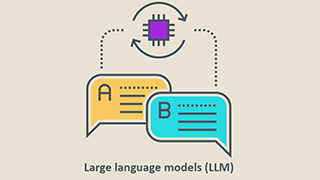15条常用Python小技巧
2019年08月11日 由 sunlei 发表
367183
0

你是不是也和我一样厌倦了每次在Stack Overflow上搜索时忘记如何在Python中执行某些操作?如果你的答案是“yes”,你非常幸运,这篇文章就是为你量身定制的!
这里有15个python提示和技巧可以帮助您更快地编写代码!
1、交换值
x, y = 1, 2
print(x, y)
x, y = y, x
print(x, y)
2、将字符串列表合并为一个字符串列表
sentence_list = ["my", "name", "is", "George"]
sentence_string = " ".join(sentence_list)
print(sentence_string)
3、将字符串分割为子字符串列表
sentence_string = "my name is George"
sentence_string.split()
print(sentence_string)
4、初始化一个包含数字的列表
[0]*1000 # List of 1000 zeros
[8.2]*1000 # List of 1000 8.2's
5、合并字典
x = {'a': 1, 'b': 2}
y = {'b': 3, 'c': 4}
z = {**x, **y}6、扭转一个字符串
name = "George"
name[::-1]
7、从函数返回多个值
def get_a_string():
a = "George"
b = "is"
c = "cool"
return a, b, c
sentence = get_a_string()
(a, b, c) = sentence
8、列表推导
a = [1, 2, 3]
b = [num*2 for num in a] # Create a new list by multiplying each element in a by 2
9、迭代字典
m = {'a': 1, 'b': 2, 'c': 3, 'd': 4}
for key, value in m.items():
print('{0}: {1}'.format(key, value))10、在获取索引时迭代列表值
m = ['a', 'b', 'c', 'd']
for index, value in enumerate(m):
print('{0}: {1}'.format(index, value))
11、初始化空容器
a_list = list()
a_dict = dict()
a_map = map()
a_set = set()
12、删除字符串末尾的无用字符
name = " George "
name_2 = "George///"
name.strip() # prints "George"
name_2.strip("/") # prints "George"
13、找出列表中最常见的元素
test = [1, 2, 3, 4, 2, 2, 3, 1, 4, 4, 4]
print(max(set(test), key = test.count))
14、检查对象的内存使用情况
import sys
x = 1
print(sys.getsizeof(x))
15、将dict转换为XML
from xml.etree.ElementTree import Elementdef dict_to_xml(tag, d):
'''
Turn a simple dict of key/value pairs into XML
'''
elem = Element(tag)
for key, val in d.items():
child = Element(key)
child.text = str(val)
elem.append(child)
return elem
总结:
Python的小技巧还有很多,上面只是介绍了其中的一部分,入门容易精通难!在进阶的路上没有捷径,就是不断总结,不断记笔记!尤其是好的用法,就像写作文一样,好的名言警句要多背诵一些,写作的时候,肚子里的墨水多了才能才思泉涌,写出更多的好代码。
原文链接:https://medium.com/@george.seif94/15-python-tips-and-tricks-so-you-dont-have-to-look-them-up-on-stack-overflow-90cec02705ae

欢迎关注ATYUN官方公众号
商务合作及内容投稿请联系邮箱:bd@atyun.com
热门企业
热门职位
写评论取消
回复取消































